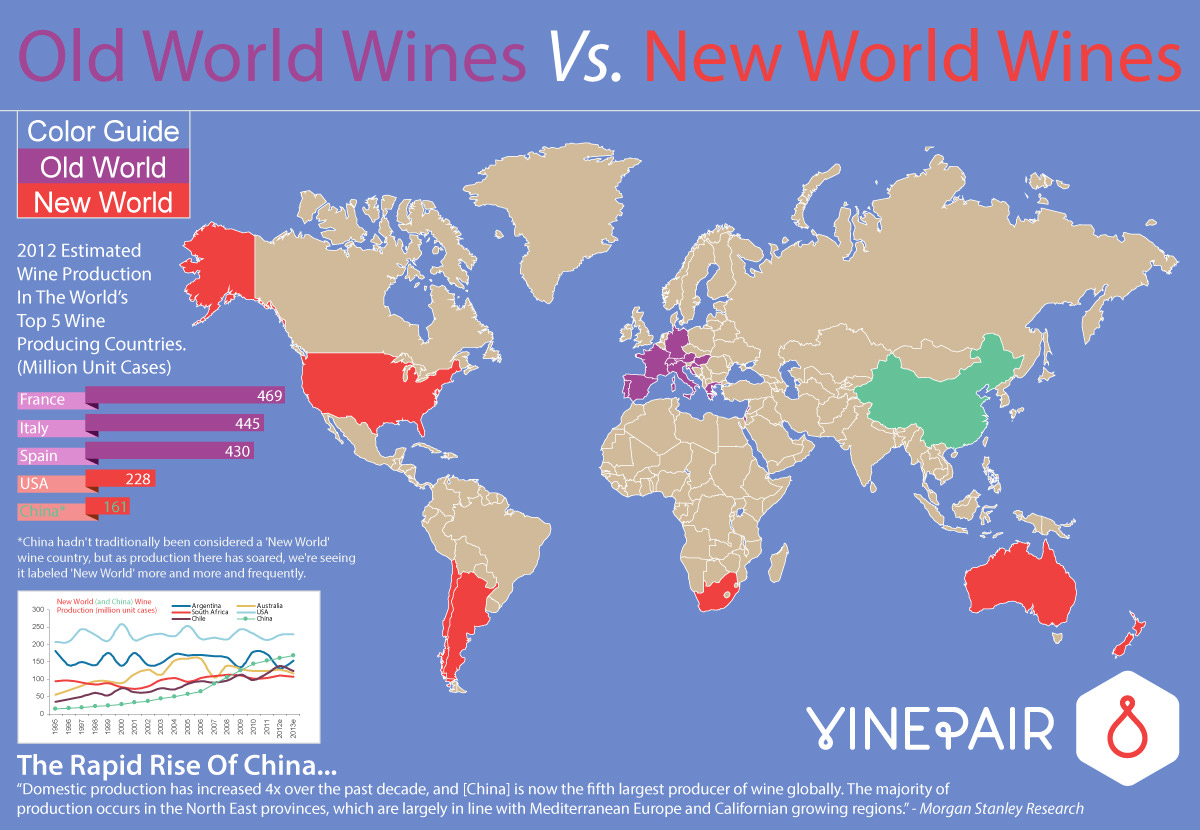The terms Old World Wine and New World Wine are ones that you might have encountered on the wine-soaked lips of your peers, yet as simple as they may seem, understanding what it actually means when someone describes a wine as being Old World or New World can be quite confusing.
Before getting into the different characteristics that are unique to wines in either of these categories, let’s first breakdown what causes a wine to take on the Old World Vs. New World label in the first place. The simplest explanation we can offer is that the label is attached to the wine depending on the country in which the wine was made; it all comes down to remembering who was a colonizer and who was colonized. Those countries that struck out across the globe seeking new land (e.g., Spain, Italy, France) are the Old World, while their colonies (e.g., the US, Australia, South Africa) are the New World.
So if a wine was made in Italy, it would be called an Old World wine, yet if it was made in Napa Valley, California, it would be a New World wine.
Now that you have a basic understanding of what causes a wine to be categorized as Old versus New World, you can begin to understand the other characteristics that are attached to the wine depending on the category the wine falls under. Broadly speaking, an Old World wine relies much more heavily on tradition, rules and regulations when it is created, while New World wines, in true colonial fashion, are much more open to experimentation and doing things differently.
Our chart of old world and new world wines allows us to examine the different characteristics associated with each category more closely:
| Old World Wine | New World Wine |
|---|---|
| Naming | Naming |
| The wine takes on the name of the place where it was made. For example, a wine made from the grape Malbec in the Cahors region of France is called Cahors, not Malbec. | The wine takes on the name of the grape that was used to make it. For example, a wine made from the grape Malbec in Mendoza, Argentina is called Malbec, not Mendoza. |
| The Process | The Process |
| Wines made in the Old World must adhere to strict regulations. Tradition is very important. The wine has been made a certain way for centuries, and maintaining this tradition is given priority. | Winemakers have the freedom to be more experimental and try new things. Strict traditions and regulations do not govern winemaking as much as in the Old World. This allows winemakers to experiment more, and use much more technology in the winemaking process. |
| Taste | Taste |
| Wines from the Old World tend to be leaner, with more acidity and tannins. | New World wines tend to be richer, with bolder fruit flavors and a more “polished” taste. |
As with anything that gets placed into a category, many wine drinkers like to claim they prefer one category of wine to the other, but in our humble opinion, both Old and New World wines have great things to offer. However, if you’re one of those people who likes to be aware of what is currently in vogue and go along with the crowd, Old World wines are currently all the rage in the wine world, with drinkers loving the heritage and nostalgia these wines represent. Don’t worry though if you’re a New World wine fan, the trends tend to change every decade, so New World wine will be back in fashion sooner than you think! But here at VinePair we’ve never been ones to follow the crowd, so we say who cares what’s trendy, drink what you like!

Header Image via Shutterstock.com

